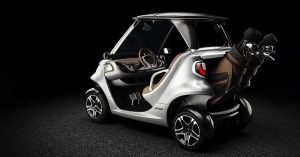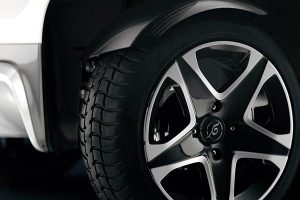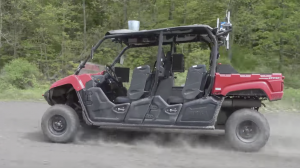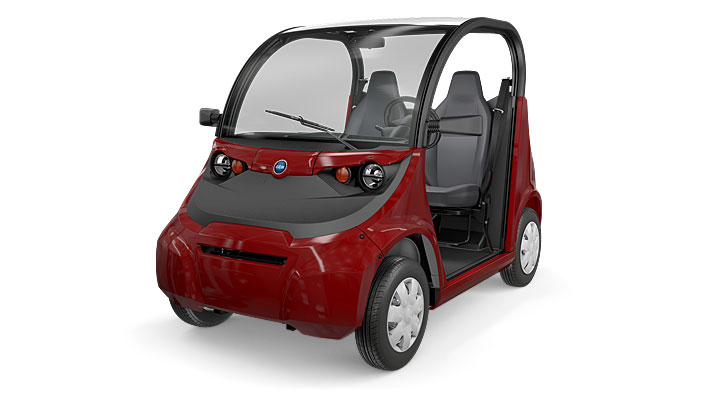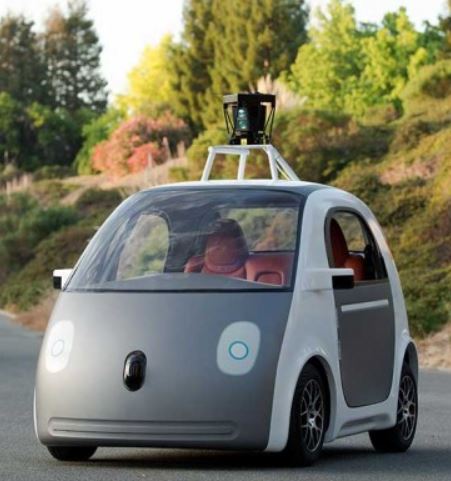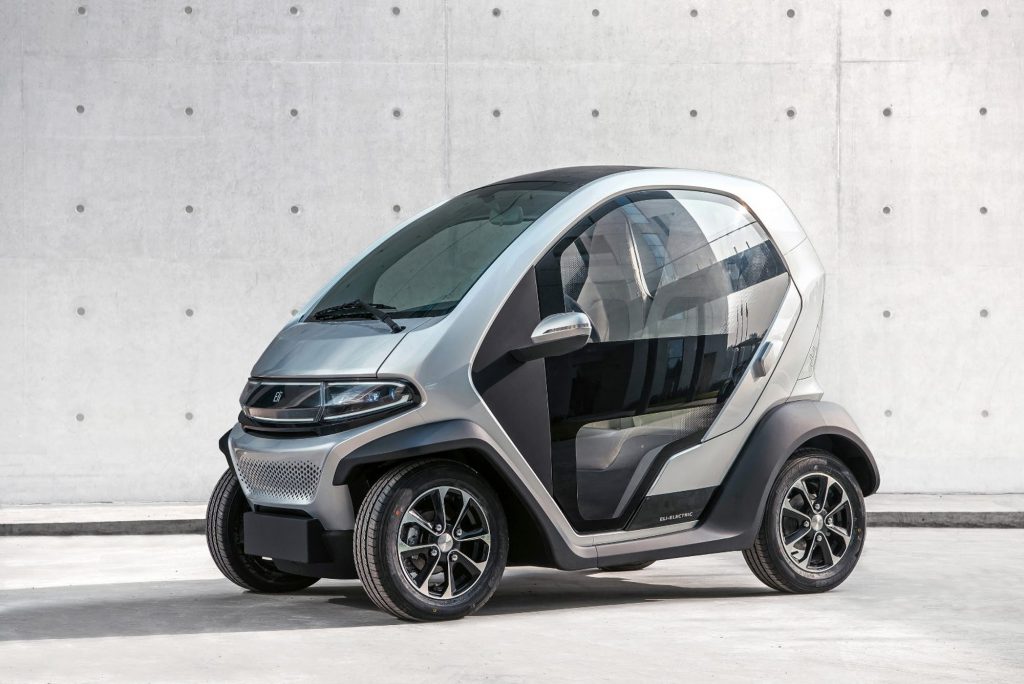
The new Eli Zero NEV from Eli Electric vehicles is expected to reach market in late 2018.
Eli Electric Vehicles is launching a new NEV, the Eli Zero, with the intention to”…fundamentally shift how people engage with modern communities and urban environments.” The company, which is co-headquartered in Long Beach, CA and Beijing, China where the vehicles are manufactured, is now taking reservations for the Eli Zero. The plan is to deliver the first 100 vehicles by the end of 2018. The first 100 customers reserving a vehicle will receive a discount of $2,200 off the expected MSRP of $9,900 to $10,900. The vehicles are targeting the urban mobility space. The base model is expected to have a 55 mile range and the Plus model with a larger battery will have an 85 mile range. The Eli Zero will be using Samsung 18650 lithium cells in the battery pack. Like all NEVs the top speed is limited to 25 mph. Key features of the Eli Zero include:
- 2-passenger seating plus cargo area behind the seats
- AC asynchronous motor
- 48V system
- 6.0 kWh or 8.3 kWh battery packs
- Toyota MCU
- Vehicle Management System that monitors data, malfunctions and energy optimization
- High-tensile aluminum frame
- Doors made from a single sheet of thermoplastic-reinforced tempered glass
- 877 lb/904 lb curb weight for the Base/Plus models
- Four wheel disk brakes
- Regenerative braking
- Cruise control
- Wide field of vision from the drivers position
- 24 ft. turning circle
- Driver proximity detection system to automatically unlock doors
- LED signal lighting
- Sunroof
- Anti-theft system
- Press to start
- Multi-function dashboard control dial and LED dashboard display
- Bluetooth
- Radio
- Heat and AC and Defrost
- Adjustable driver’s seat
Learn more: NewAtlas.com and Eli.world.
SVR’s Take: The Eli Zero appears to be a step above the current NEVs on the market in terms of technology and design. The question is whether that is appealing enough to enough consumers. NEVs have consistently fallen short of market expectations in the consumer segment even though a strong argument can be made for their use based on efficiency, appropriateness for urban mobility, size and impact on the environment. An issue in the urban environment is that if a consumer can only own one car will they make it an NEV limited to low speed roads when they can spend several thousand dollars more and have a more versatile highway capable vehicle.
In gated, summer or other communities with widespread use of lower speed vehicles, NEVs are typically the most expensive option. Other available options include used golf cars, refurbished golf cars and new golf cars which can all be customized to a fairly high degree for the same price as an NEV or be equipped with less and cost significantly less. A large swath of that market elects to own less expensive golf cars. From my experience, NEVs have been most successful in these types communities where local regulations are most restrictive regarding the use of golf cars. Perhaps the design and tech of the Eli Zero will have enough appeal to make it a primary choice in a wider range of communities.
In the urban environment NEVs will more likely have a greater appeal where their is a shared fleet of vehicles. In this situation the consumer isn’t making an ownership choice but a ride choice. Do they really need to ride in a highway capable vehicle for a short intra-city trip or will a NEV, likely for a lower cost, be more than sufficient and better for the environment?
Marc Cesare, SVR

